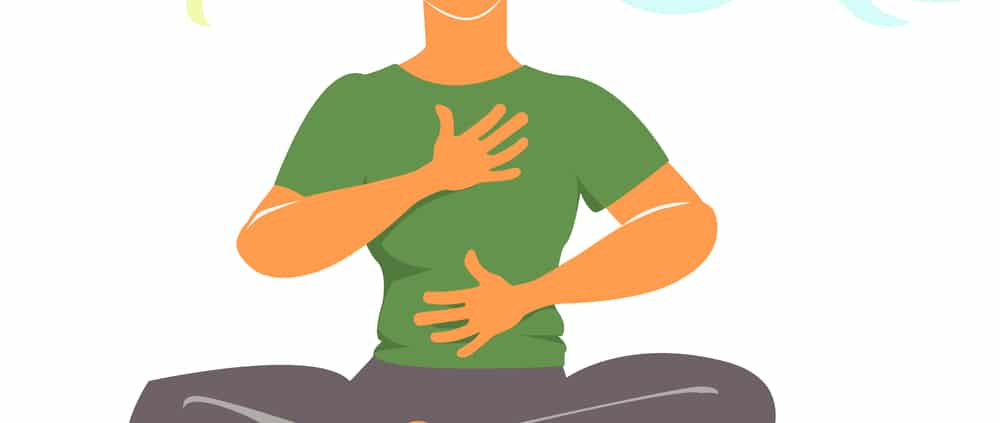Is Holotropic Breathing Dangerous?
Is Holotropic Breathing Dangerous? Breathing seems like a simple act that you do almost unconsciously. So, you may wonder why you need to worry about how you breathe if it happens without any effort on your part.
Well, our breathing is connected to every action and emotion in your life so when you are stressed, your breath feels rushed and shallow. It limits the oxygen entering your bloodstream which your brain considers a threat and so the body prepares for fight or flight.
When you breathe purposefully, your breath is more profound and slower. It tells your brain that everything is OK and that it is safe for you to relax. Your body begins to function normally again.
Different breathing techniques can have a tremendous effect on a person. Some of the forms of breathwork are:
- The 5-4-3-2-1 Technique
- Diaphragmatic Breathing
- Box Breathing
- Pranayama
- Holotropic Breathing
Even if you have done breathwork before, you may be unfamiliar with the term “Holotropic Breathing”. The effectiveness of holotropic breathwork has not been researched nearly enough. This is probably because it differs from other wellness practices like yoga and meditation.
Please keep reading to learn all about holotropic breathing; what it is, how it works, and the potential benefits of this unique breathing technique.
What is holotropic breathwork?
Holotropic breathwork is a therapeutic breathing practice that uses accelerated breathing patterns and music to increase self-awareness and emotional healing. It has this effect because practitioners experience altered states of consciousness.
What are holotropic states of consciousness?
Psychiatrists Stanislov Grof and Christina Grof developed Holotropic Breathing in the mid-70’s. This was shortly after hallucinogens such as LSD (Lysergic Acid Diethylamide) were banned in the United States. Stanislov and Christina believed that the intense reflective state induced by such a breathing technique could help people heal without the need for such drugs. Holotropic Breathing could open their minds to deep self-awareness and even release past trauma.
Grof has been researching a significant subgroup of non-ordinary states of consciousness for over 50 years. He calls these altered states with healing potential “Holotropic Breathing”. It is a composite word loosely translated as “moving toward wholeness.”
According to him, these states have transformative and evolutionary potential. Its heuristic prospects provide revolutionary information about the human psyche, consciousness, and the nature of reality
Shamans experience these states as part of their initiatory crisis which they use while working with their clients. In traditional cultures, these states often occur during “rights of passage” rituals which mark critical biological and social transitions such as the birth of a child, puberty, marriage, or death.
These states were also described in the context of death and rebirth in Egypt, Greece, Asia, and Mesoamerica. When people could alter their states of consciousness, they experienced psychospiritual death and resurrection.
It was also described by people practising different forms of yoga in cultures like Buddhism, Taoism, Kaballah, and Christian mysticism.
The five components
Holotropic Breathing aims to access parts of your psyche that you can’t reach under normal states without using psychedelic drugs.
A certified facilitator performs the holotropic breathwork method with a group which is then divided into pairs. One is the the ‘breather’ who actively does the breathwork while the ‘sitter’ is the supportive observer who ensures the ‘breather’ is safe.
They then alternate between these roles throughout the session. Most sessions last for two to three hours. The ‘breather’ should use their self-awareness to direct their own experience, and sitters should allow them to react independently and spontaneously.
- Holotropic Breathing
The facilitator assists participants whenever special intervention is necessary. The ‘breather’ lies down, relaxes, and breathes as rapidly and deeply as possible. After establishing a breathing rhythm, participants may eventually settle on a slightly different variation of breathing rhythm that feels most natural to them.
- Music
Once the Holotropic Breathing rhythm is established, intense, evocative music is played. It induces a state of trance, allowing altered states of consciousness. The session typically begins with activating theme that is dynamic and emotionally uplifting.
As the session continues, the music gradually increases in intensity and moves to powerful rhythmic pieces. The primary purpose is to induce holotropic experiences. Music that is
intense and of high artistic quality is preferred to create a positive experience.
- Releasing bodywork
The physical response to holotropic breathwork varies from person to person. It changes the body’s chemistry so that the pent-up energy in our bodies is released. Often, the challenging emotions and sensations are voluntarily resolved. The “breather” feels deeply relaxed.
Physical reactions can vary, including tremors, jolts, coughing, crying, and vomiting. If this breathing does not lead to deep relaxation, the ‘sitter’ may encourage the ‘breather’ to focus their attention on their tension area.
- Mandala drawing
Once the breathwork is complete, the ‘breather’ expresses themselves through mandala art. Mandalas have been used in healing ceremonies and ritual practices through the ages. Mandala is a Sanskrit word meaning ‘circle’ or ‘completion.’
It’s believed that mandala art supports the coming together of the conscious and unconscious and promotes meaningful contemplation.
- Sharing sessions
Later breathers bring their mandalas to a sharing session, during which
they talk about their experiences. Facilitators abstain from interpreting the participants’ experiences. Instead, they ask questions to help the participants get additional information to understand the experience from an individual perspective.
Benefits of Holotropic Breathing
According to this study, extremes in the breathing rate can cause profound shifts in consciousness. You can find very sophisticated breathing pattern exercises in the ancient Indian science of breath or pranayama.
Physical health benefits of Holotropic Breathing may include:
- Balanced blood pressure
- Deep, restful sleep
- Reduction of PTSD (Post Traumatic Stress Disorder)
- Relief from migraine and other chronic pains
- Stronger respiratory system
- Stronger immune system
- Release of stress hormones from your body
- Relief from PMS (Pre Menstrual Syndrome)
Emotional benefits may include:
- Self-awareness
- Release of pent-up emotions
- Healing of emotional scars
- Reduced depression and anxiety
- Improved mental focus
- Reduction in addictive behaviors
- Better outlook on life
Potential risks of Holotropic Breathing
A strong emotional and physical release occurs during and after the session. Therefore, it may not be recommended for specific individuals. People with the following conditions should not participate in Holotropic Breathing:
- Cardiovascular diseases
- Heart problems
- High blood pressure
- Glaucoma
- Retinal detachment
- Osteoporosis
- Recent injuries or surgeries
- People taking regular prescription drugs
- History of panic attacks, psychosis, or disturbances
- Severe mental illness
- Seizures
- Family history of aneurisms
When someone breathes rapidly and diligently for an extended period, they can lose too much carbon dioxide. It makes the blood overly alkaline, triggering an immediate physiological response such as:
- Dizziness
- Tingling in your hands, arms, feet, or legs
- Irregular heartbeat
- Muscle spasms
- Change in vision from lack of oxygen
- Ringing in your ears
- Seizures
Holotropic Breathing provokes or enhances pent-up feelings and emotions. It may help people with greater tolerance endure these shifts and unpredictable outcomes. But at the same time can harm someone who has health problems or dealing with a psychological disorder. Although it is considered a low-risk therapy, holotropic breathwork may not suit everyone.
How to do holotropic breathing?
It’s recommended that you do holotropic breathing under the guidance of a trained and certified facilitator. The experience can potentially be extreme and emotional. The facilitators will assist and guide you. Holotropic breathing is sometimes used as part of a counseling treatment plan.
FAQs
Is it safe to do holotropic breathwork?
Holotropic breathing can induce non-ordinary states of consciousness. A strong emotional and physical release occurs during and after the session. Therefore, it may not be recommended for specific individuals. Please consult your doctor to see if it is right for you.
Can I do Holotropic Breathing alone?
The holotropic breathwork method is performed in a group with a certified facilitator. Sessions are also available in workshops, retreats, or one-to-one. Discuss with your facilitator which one best suits your needs. The facilitator will guide you through the process.
Can breathwork be harmful?
Holotropic Breathwork, when performed under expert guidance, can have benefits. But it may not be suitable for individuals with a history of cardiovascular diseases, heart problems, panic attacks, or severe mental illness. Before your session, you should discuss any concerns with your doctor or facilitator.
Is holotropic breathwork just hyperventilating?
During holotropic breathwork, the participant breathes in as rapidly and deeply as possible. After establishing a breathing rhythm, participants may eventually settle on a slightly different variation of breathing rhythm that feels most natural to them. Therefore, holotropic breathwork isn’t just hyperventilating.
Final thoughts
If you are interested in pursuing a holotropic breathwork session, it is always recommended that you research and find an experienced, trained, trustworthy facilitator.
Have discussions with your licensed and certified practitioner to set out what you hope to gain from the sessions beforehand and ensure you know what to expect.
When used in a safe and controlled way, it has been shown that this kind of breathing can be of great benefit.
More research must be conducted to prove its effectiveness on people with pre-existing medical and psychiatric conditions. Ultimately, the facilitator is responsible for ensuring the participants are safe.






